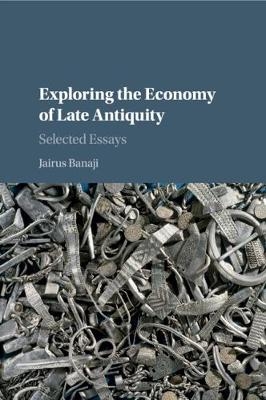
Exploring the Economy of Late Antiquity
Cambridge University Press (Verlag)
978-1-107-49953-9 (ISBN)
This collection of essays, by leading historian Jairus Banaji, provides a stimulating rebuttal to the prevailing minimalism in late antique studies. Together, they strike a balance between the wide lens and more specialised discussion, expanding on the perspective and argumentation laid out in an earlier book, Agrarian Change in Late Antiquity (2001). Successive chapters discuss the scale of the late Roman gold currency, the economic nature of the aristocracy, the importance of trade, relations between the state and the ruling class, and the problem of continuity into the early Middle Ages. A substantial introduction pulls together the themes of the book into a coherent synopsis, while the preface clarifies the broad aims behind the study. The book as a whole deploys a wide range of sources in various languages and is intended for ancient historians, students of late antiquity, and economic historians more generally.
Jairus Banaji is Research Professor at the School of Oriental and African Studies, University of London. He has published on a wide range of subjects and very different periods, and his last book Theory as History (2010) won the 2011 Isaac and Tamara Deutscher Memorial Prize.
Preface; Introductory essay: 1. Mass production, monetary economy and the commercial vitality of the Mediterranean; Part I. Mapping the Late Antique Economy: 2. Mickwitz's modernism: the writings of 1932–6; 3. State and aristocracy in the economic evolution of the Late Empire; 4. The economic trajectories of late antiquity; Part II. Money Circulation (Rules, Rhythms): 5. Discounts, weight standards and the exchange rate between gold and copper; 6. Precious metal coinages and monetary expansion in late antiquity; Part III. Aristocracies and Estates: 7. Aristocracies, peasantries and the framing of the early Middle Ages: 8. Late antique aristocracies: the case of Iran; Part IV. Beyond the Mediterranean and Late Antiquity: 9. Late antique legacies and Muslim economic expansion; 10. 'Regions that look seaward' - changing fortunes, submerged histories, and the slow capitalism of the sea.
| Erscheinungsdatum | 30.10.2018 |
|---|---|
| Zusatzinfo | 2 Tables, black and white; 2 Halftones, color |
| Verlagsort | Cambridge |
| Sprache | englisch |
| Maße | 153 x 230 mm |
| Gewicht | 430 g |
| Themenwelt | Geisteswissenschaften ► Archäologie |
| Geschichte ► Allgemeine Geschichte ► Vor- und Frühgeschichte | |
| Geschichte ► Allgemeine Geschichte ► Altertum / Antike | |
| Geschichte ► Allgemeine Geschichte ► Mittelalter | |
| Geschichte ► Teilgebiete der Geschichte ► Wirtschaftsgeschichte | |
| Wirtschaft ► Allgemeines / Lexika | |
| ISBN-10 | 1-107-49953-4 / 1107499534 |
| ISBN-13 | 978-1-107-49953-9 / 9781107499539 |
| Zustand | Neuware |
| Informationen gemäß Produktsicherheitsverordnung (GPSR) | |
| Haben Sie eine Frage zum Produkt? |
aus dem Bereich


